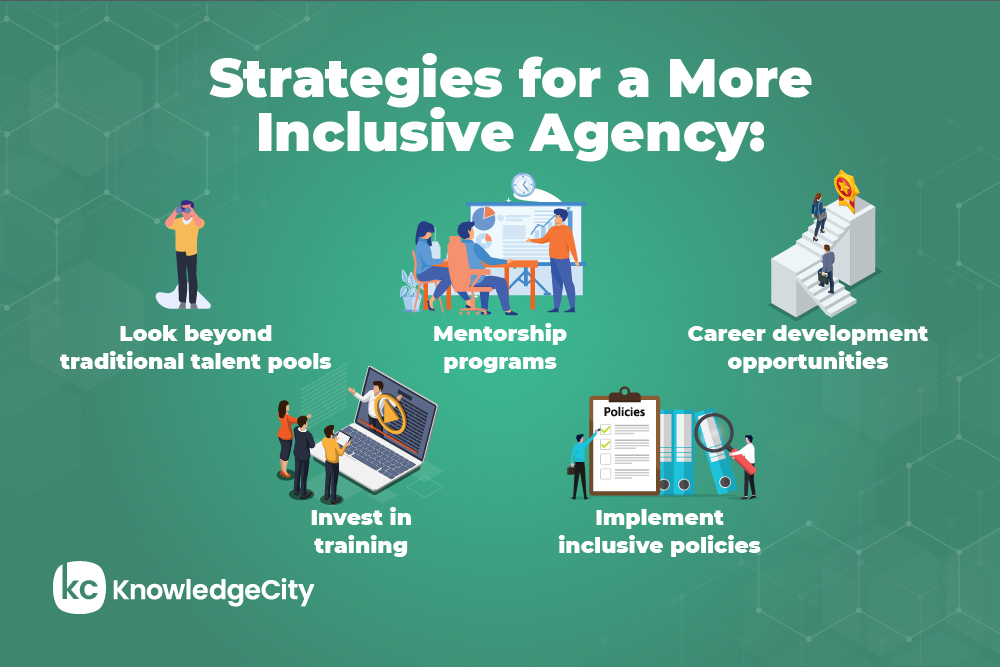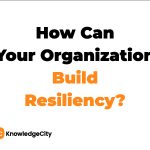In the evolving public sector landscape, inclusivity in the workplace is not merely a moral imperative but a strategic necessity. For HR decision-makers and public sector leaders, fostering an inclusive agency is essential for nurturing increased engagement and a healthier workplace.

This article will look at the complexities of inclusivity in the workplace, highlight its critical impact on agency culture, and outline the inclusivity strategies vital for creating an environment where diversity is celebrated and every individual feels valued.
Inclusivity requires a deep commitment to action, ensuring that every employee has the opportunity to contribute meaningfully. By integrating inclusivity strategies into the core values and operations of public sector agencies, we pave the way for a workspace where diversity is integral to the agency’s identity and success. Through this exploration, we will provide HR leaders and public sector decision-makers with the knowledge and tools to champion inclusivity in the workplace effectively.
Understanding and Implementing Inclusivity
Inclusivity in the workplace demands a commitment to action. It’s about recognizing each individual’s unique contributions and ensuring every employee has the opportunity to excel. HR leaders are at the forefront of this movement, charged with transforming workplaces into environments where diversity is accepted and celebrated as a catalyst for innovation and growth.
Boosting inclusivity in the workplace starts with a comprehensive approach encompassing all aspects of the organization. It’s about creating policies that reflect the workforce’s diverse needs and implementing programs that address the specific challenges faced by underrepresented groups. Whether it’s through enhancing accessibility for individuals with disabilities or developing targeted mentorship programs for minority groups, the goal is to create a truly inclusive workplace.
The DEI strategy is a critical framework that guides organizations in this endeavor. It provides a structured approach to diversity, equity, and inclusion, ensuring that these principles are integrated into every facet of the organization’s operations. From recruitment to professional development and leadership training to employee engagement, a robust DEI strategy is the blueprint for agency inclusivity.
To truly embed inclusivity in the workplace, agencies must also tackle the often subtle nuances of unconscious bias. This requires a proactive stance, from adopting inclusive language in job descriptions to implementing blind recruitment processes. It’s about setting measurable targets for the hiring and progression of underrepresented groups, as Google has done, transforming inclusivity in the workplace from a conceptual idea into a tangible, measurable reality.
Inclusivity in Agency Culture
The importance of inclusivity in shaping agency culture cannot be overstated. An inclusive culture fosters a sense of belonging and commitment among employees. It’s about creating an environment where employees feel empowered to contribute their best work, knowing their ideas and perspectives are valued and respected.
In an inclusive agency, open communication and mutual respect are not just policies; they are practices lived out daily. It’s about sharing a vision that recognizes the unique contributions of each individual, thereby enhancing collaboration and driving innovation. When inclusivity in agencies is deeply ingrained, it leads to better decision-making and a more engaged, productive, and loyal workforce.
Building an inclusive culture is an ongoing process that requires dedication and consistent effort. It involves regular reflection on the agency’s practices, listening to employee feedback, and making necessary adjustments to ensure that inclusivity remains a core value. Celebrating cultural diversity, recognizing various religious and personal practices, and fostering an environment of inclusiveness are all part of this dynamic process.
Leadership is pivotal in championing inclusivity in the workplace. They set the tone for an inclusive culture by modeling the behavior they expect to see throughout the organization. By prioritizing inclusivity as a key performance indicator, leaders can ensure that it remains a vibrant and integral part of the agency’s ethos over the long term.
Strategies for an Inclusive Agency
Developing inclusivity strategies for recruitment and retention is essential for any agency aiming to foster a diverse and dynamic workforce. This involves adopting hiring practices that are free from biases and that actively seek to include individuals from various backgrounds and experiences. It’s about looking beyond the traditional talent pools and recognizing the value that diverse perspectives bring to the agency.
Retention is just as critical as recruitment regarding inclusivity in the workplace. Agencies must create career development opportunities that are accessible to everyone, ensuring that all employees have the chance to grow and advance within the organization. This includes offering mentorship programs, providing inclusive job descriptions, and ensuring that career progression is based on merit and not hindered by unconscious biases.
Boosting inclusivity in the workplace also means investing in education and training. Regular, comprehensive training programs are necessary to raise awareness about the importance of inclusivity and to equip employees with the skills needed to work effectively in diverse teams. Training should be ongoing and tailored to the specific needs of the agency, ensuring that inclusivity is not just a one-time initiative but a continuous commitment.
Creating inclusive spaces and policies is another proactive approach to fostering equity in the workplace. This includes everything from the office’s physical layout to the policies that govern everyday work life. By engaging the entire workforce in open dialogue and providing educational training sessions, agencies can manage resistance and build a consensus on the benefits of an inclusive environment.
Monitoring and Sustaining Inclusivity Efforts
In the journey toward inclusivity in the workplace, it is essential to establish robust mechanisms for monitoring and sustaining inclusivity efforts. This involves setting clear, measurable goals and regularly tracking progress against these objectives.
Agencies must collect and analyze relevant data, such as demographic statistics, employee satisfaction surveys, and rates of participation in inclusivity programs. This quantitative data, coupled with qualitative feedback, provides a holistic view of the agency’s inclusivity landscape and helps identify areas for improvement.
However, data alone does not drive change. Agencies must act on the insights gained from their assessments to refine their DEI strategy and inclusivity practices. This could involve revising recruitment and retention policies, updating training programs, and enhancing support systems for underrepresented groups. It’s also about celebrating successes and learning from setbacks, ensuring that inclusivity efforts are responsive to the evolving needs of the workforce.
Sustaining inclusivity also requires a cultural shift that can only be achieved through persistent effort and leadership commitment. Leaders must model inclusive behaviors, communicate the value of diversity, and embed inclusivity into the agency’s mission and practices. By making inclusivity a key performance indicator for all levels of the agency, leaders can ensure that it remains a dynamic and integral part of the organization’s ethos over the long term. Regularly revisiting and refreshing inclusivity goals will keep the agency aligned with best practices and responsive to the changing societal and workforce dynamics.
Conclusion
Inclusivity in the workplace is a strategic imperative for public sector agencies, essential for fostering a work environment where diversity is accepted and actively celebrated as a cornerstone of innovation and productivity. This article has underscored the importance of inclusivity, detailing the necessary steps for HR decision-makers and public sector leaders to create a culture where everyone feels valued and integral to the agency’s success.
The journey toward inclusivity is ongoing, demanding continuous commitment to developing and implementing strategies that promote a sense of belonging and opportunity for all employees.
To sustain this commitment, agencies must regularly monitor and adapt their inclusivity strategies, ensuring they remain effective and responsive to the evolving needs of their workforce. Leadership plays a pivotal role in this process, exemplifying the values of diversity and openness that are at the heart of an inclusive culture.
By prioritizing inclusivity as a key performance indicator and celebrating the milestones achieved, public sector agencies can ensure that inclusivity is more than a policy—it’s the pulse of the workplace, driving engagement, satisfaction, and a healthier workplace for everyone.
Subscribe to Our Newsletter
Join 80,000+ Fellow HR Professionals. Get expert recruiting and training tips straight
to your inbox, and become a better HR manager.

 Chuk Otakpor
Chuk Otakpor 










